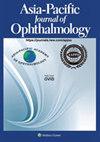亚太眼科教授学会(AAPPO)关于现代白内障手术的争议、共识和指南。
IF 4.5
3区 医学
Q1 OPHTHALMOLOGY
引用次数: 0
摘要
自1967年Charles Kelman提出超声乳化术以来,白内障手术发生了革命性的变化,成为世界大部分地区白内障摘除的黄金标准。尽管它被广泛采用,成功率高,但在眼科社区中,关于手术的各个方面存在争议。亚太眼科教授学会(AAPPO)成立了一个由来自18个国家/地区的25名专家组成的国际小组,以开展这一共识项目。小组共评估了15个章节和61个共识陈述。飞秒激光辅助白内障手术并不比Phaco好。一个干涉仪被认为是必不可少的测量眼参数,需要选择一个合适的人工晶体(IOL)公式强调。当考虑多焦点iol时,对患者的性格特征进行评估,并在手术前对选择的利弊进行彻底的讨论是必不可少的。适当的知情同意也是必不可少的。需要及时解决像塔斯这样的并发症,包括对手术室协议的重新评估。最后,人们普遍认为,人工手术在大而密集的眼核和需要低成本、大批量手术的人群中发挥着重要作用。在适当的情况下,首选手动但不缝合的入路。由于61项共识声明中约有60%达成一致,这反映了现实世界的实践存在差异。有必要进行进一步的研究,在获得更多信息后进行后续的协商一致是值得考虑的。本文章由计算机程序翻译,如有差异,请以英文原文为准。
Controversies, consensuses and guidelines on modern cataract surgery by the academy of Asia-Pacific professors of ophthalmology (AAPPO)
Phacoemulsification has revolutionized cataract surgery since its introduction by Charles Kelman in 1967, becoming the gold standard for cataract removal in most parts of the world. Despite its widespread adoption and high success rates, there exist controversies within the ophthalmic community regarding various aspects of the procedure. An international panel comprising 25 experts from 18 countries/territories was established by the Academy of Asia-Pacific Professors of Ophthalmology (AAPPO) to work on this consensus project. A total of 15 sections with 61 consensus statements were evaluated by the panel. Femtosecond laser assisted cataract surgery was not considered better than Phaco. An interferometer was considered essential for measuring the ocular parameters, and the need to choose an appropriate intraocular lens (IOL) formula was stressed. When considering multifocal IOLs, an assessment of the patient’s personality profile, and a thorough discussion of the pros and cons of the choice before surgery was essential. Proper informed consent was also essential. The need to address complications like TASS promptly including a reassessment of operating rooms protocols was stressed. Finally, there was general agreement that manual surgeries have a significant role to play in eyes with large, dense nuclei and in populations where low-cost, high-volume surgery was necessary. Manual but sutureless approach was preferred where appropriate. Since there was agreement on about 60 % of the 61 consensus statements, it reflected that there were variations in the real-world practice. Further studies are warranted and a follow-up consensus exercise after more information is available is worth considering.
求助全文
通过发布文献求助,成功后即可免费获取论文全文。
去求助
来源期刊

Asia-Pacific Journal of Ophthalmology
OPHTHALMOLOGY-
CiteScore
8.10
自引率
18.20%
发文量
197
审稿时长
6 weeks
期刊介绍:
The Asia-Pacific Journal of Ophthalmology, a bimonthly, peer-reviewed online scientific publication, is an official publication of the Asia-Pacific Academy of Ophthalmology (APAO), a supranational organization which is committed to research, training, learning, publication and knowledge and skill transfers in ophthalmology and visual sciences. The Asia-Pacific Journal of Ophthalmology welcomes review articles on currently hot topics, original, previously unpublished manuscripts describing clinical investigations, clinical observations and clinically relevant laboratory investigations, as well as .perspectives containing personal viewpoints on topics with broad interests. Editorials are published by invitation only. Case reports are generally not considered. The Asia-Pacific Journal of Ophthalmology covers 16 subspecialties and is freely circulated among individual members of the APAO’s member societies, which amounts to a potential readership of over 50,000.
 求助内容:
求助内容: 应助结果提醒方式:
应助结果提醒方式:


